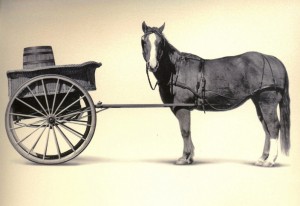Facts, Phrases, and Ferguson
“Hands up, don’t shoot,” became a chanted slogan for outraged protesters after Michael Brown’s killing in Ferguson, Missouri.
There was considerable mainstream media skepticism from the beginning about whether Mr. Brown actually had his hands raised (see Washington Post, December 4; see Newsweek, December 2), though those suspicions didn’t hold back the popularity of the phrase as a rallying cry for demonstrators.
The suspicions were proven out by the Justice Department’s report published March 4. Whereupon conservative commentators unleashed outraged attacks on the mainstream media for having perpetuated a lie (see Limbaugh, Rush, and Scarborough, Joe), notwithstanding the previous citations.
On the face of it, Limbaugh et al would seem to have a point: how can anyone justify repeating a slogan based on something proven not to be the case? How can you base a movement on a lie?
But look deeper. This is far, far from the only time that a good story line overwhelmed the facts. You can even argue that it’s human nature not to let the facts get in the way of a good piece of rhetoric.
Famous Past Facts vs. Phrases
Remember when Humphrey Bogart famously said, “Play it again, Sam,” in the classic movie Casablanca? Except that you don’t, because he didn’t. Further, it’s widely known that he didn’t. But it doesn’t stop anyone repeating it.
Everyone knows that the US Declaration of Independence was signed on July 4. Except that it wasn’t.
One of the more eloquent statements of environmental and spiritual thought was uttered in 1854 by Chief Seattle, who said in opposition to a request to sell land, “The earth does not belong to us; we belong to the earth.” Except those words were actually written by a Hollywood screen writer in 1971.
In the 1988 US Presidential campaign, Gary Hart was a leading Democratic candidate – until he responded to charges of womanizing by saying to reporters, “Go ahead, follow me around – I don’t care.” Whereupon a Miami Herald reporting team took him up on it, and quickly confronted him engaged in a dalliance with Donna Rice. Except that it didn’t happen that way at all. The Herald reporters did their investigation without having heard the challenge, made weeks earlier to an entirely different journalist.
Who said, “Nice guys finish last?” If you think it was Leo Durocher, you’re not alone – Leo Durocher himself thought he said it – 25 years after the fact. What he actually said was, “the nice guys are all over there, in seventh place.” People later truncated the phrase, including Leo himself.
Probably the best-known quote from the original TV series Dragnet was from Sgt. Friday, who famously said, “Just the facts, ma’am.” Except, you guessed it – he never said it.
And let’s don’t even start with George Washington and that cherry tree.
In fact, let’s let another President have the last word.
In a 1983 Congressional Medal of Honor ceremony, Reagan cited a story of heroism from WWII. A New York Daily News reporter tracked down the story, and determined it had never happened in real life. It did, however, happen in the 1944 film A Wing and a Prayer.
Asked to comment on the boss’s apparent mismatch between rhetoric and reality, Reagan’s press secretary Larry Speakes put it thusly: “If you tell the same story five times, it’s true.”
Speakes spoke the truth, in an important way. Reagan knew that truth very well himself (Lincoln, too, placed great value on rhetoric, though most of his stories were transparently fictional). Done to excess, of course, unbounded rhetoric is also the Big Lie strategy of propaganda.
But when the mischaracterization is close, makes some sense, and offers a fling at a ringing and rhythmic bit of rhetoric – well, humans have proven time and again that they prefer a good story to being tied down by those pesky facts.

 The latest case in point: Public Company Accounting Oversight Board (PCAOB) Chairman James R. Doty, keynoting on the subject of Integrity at the
The latest case in point: Public Company Accounting Oversight Board (PCAOB) Chairman James R. Doty, keynoting on the subject of Integrity at the